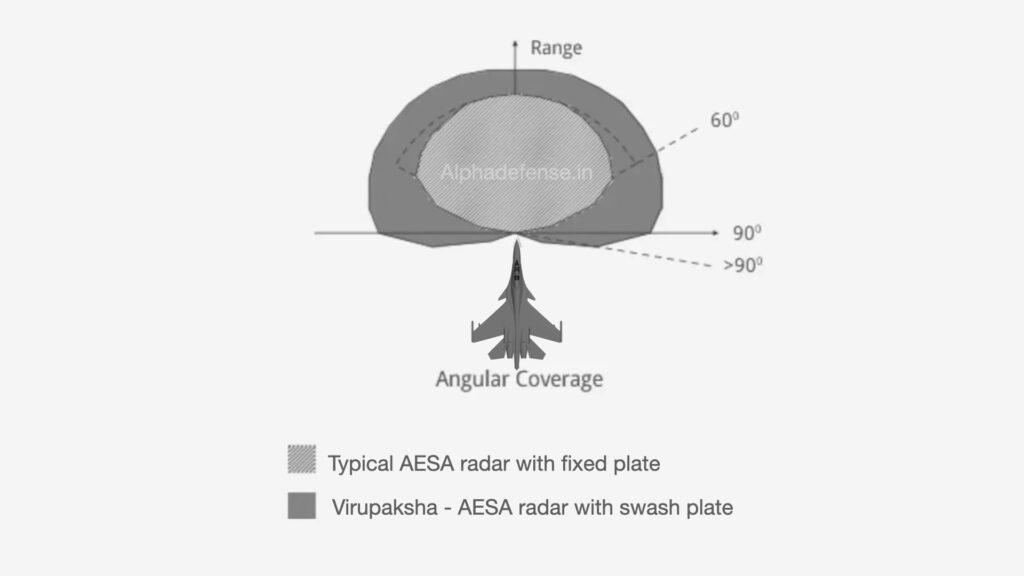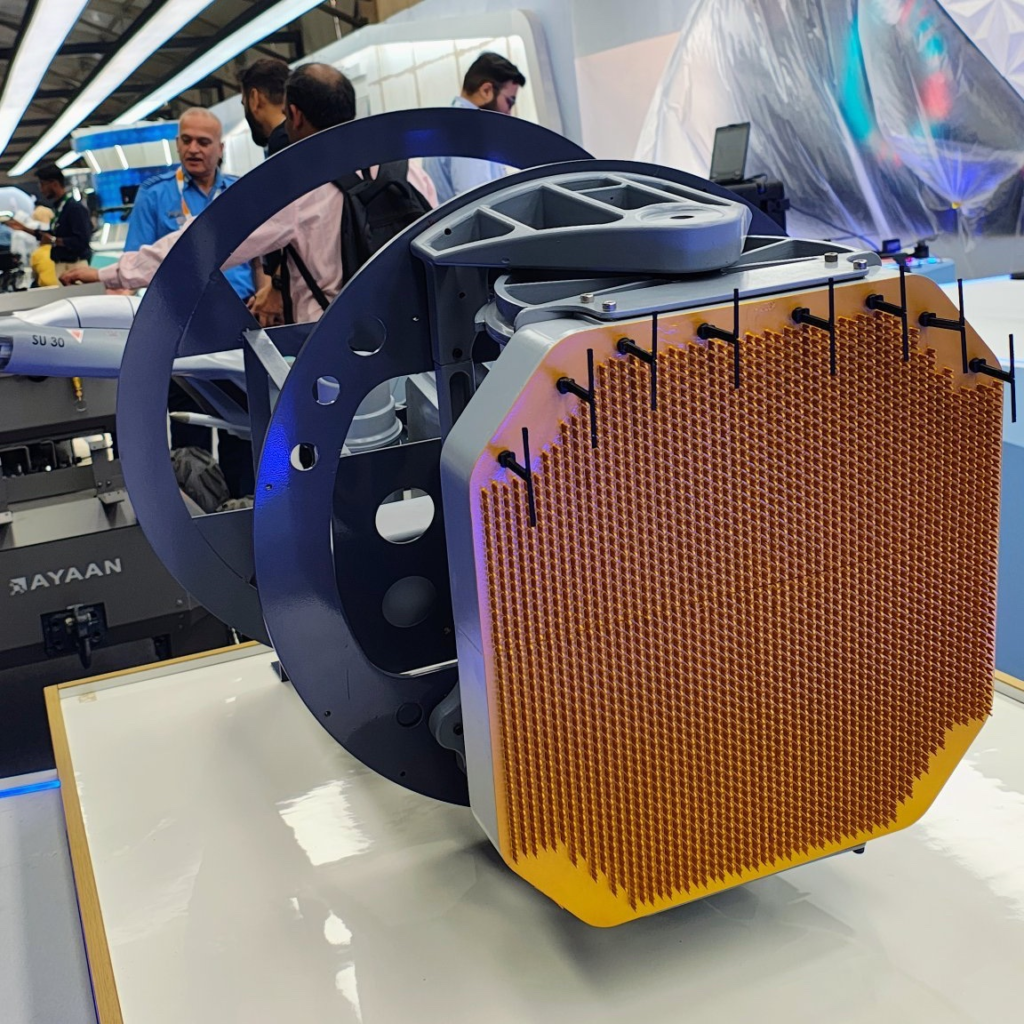The Indian Air Force (IAF) has launched a major upgrade for its Su-30 MKI fleet. At the center stands the Virupaksha Radar, an advanced AESA radar developed by DRDO’s LRDE. This radar uses state-of-the-art technology to improve situational awareness, targeting precision, and mission reliability. Through this system, India ensures its air superiority amid evolving aerial threats.
LRDE designed the Virupaksha Radar to meet current and future combat demands. It boosts the Su-30 MKI’s capability in electronic warfare, tracking, and engagement. By using indigenous technology, India reduces dependency on foreign systems and strengthens defense self-reliance.
Virupaksha: The Beast in Making
The Virupaksha Radar will feature a GAN-based Active Electronically Scanned Array (AESA) architecture, offering superior thermal efficiency and power density over traditional GaAs systems. With 2,400 Transmit-Receive Modules (TRMs) almost twice the count of the Rafale’s RBE2-AA and significantly more than any radar in India’s inventory, it promises exceptional target detection and tracking performance. The radar will deliver high peak power, extended range, and faster beam steering capabilities. Notably, it will incorporate electronic steering, similar to the Captor-E radar on the Eurofighter Typhoon, allowing wide azimuth coverage and agile beam control essential for modern aerial combat.

How Virupaksha Radar Enhances Fighter Capability
The Virupaksha Radar includes eight Line Replaceable Units (LRUs) that together deliver unmatched performance. These include the Active Array Antenna Unit, Exciter Unit, and Radar Receiver Unit. Additional units such as the Antenna Positioner, Radar Processing Unit, and Cooling Unit form the radar’s backbone.

Each component plays a key role in radar accuracy, range, and power management. The Radome and Antenna Power Supply round out the system. DRDO leads the design and development, while a Development cum Production Partner (DCPP) integrates it into IAF platforms.
DCPP Holds the Key to Program Execution
The DCPP must deliver not just components but a complete support ecosystem. It must possess skilled manpower, advanced infrastructure, and certified quality systems. Once selected, the DCPP oversees integration, flight validation, and large-scale production.

Importantly, the DCPP must offer post-deployment support for at least 20 years. This includes spares, upgrades, training modules, and on-aircraft servicing. During this phase, LRDE will reduce involvement, shifting the core responsibility to the partner.
Four Phases Drive the Project Timeline
The program unfolds in four clear phases. First, the DCPP supports radar hardware realization while designing Ground Support and Automated Test Equipment. This lasts 16 months.
Next, integration work begins and spans 15 months. During this period, engineers ensure seamless compatibility between aircraft and radar. Simultaneously, radar flight trials run for 9 months to verify in-air performance.

The final stage grants production clearance. This two-month window allows full-scale manufacturing to begin without delays. Throughout, the DCPP must remain agile, as project scope may evolve with IAF needs.
Rights, Risks, and Future Orders
DRDO retains all design and intellectual rights for the Virupaksha Radar. However, after successful trials, the DCPP receives a non-exclusive production license. This enables it to produce and support the radar for the IAF.
LRDE will initially deliver three radars for evaluation. After performance reviews, the IAF may order around 50 systems over 10–15 years. Although no number is guaranteed, the expectation is significant.

if this radar is superior to the Radar in SU 57E, will Russia agree to its replacement with our Virupaksha radar?
284 planned aircraft , 268 currently we have , but we plan our own component for 50 only , this is the reason our company not grow or invest in R&D,we suppose to use this aircraft for next 30 years , but only upgrade 50
Looks good on paper, but the inability to integrate the Uttam AESA radar, of which the Virupaksha is a more advanced version of, onto the Tejas Mk1A doesn’t inspire confidence at all, nor does the final paragraph in the article about a mere 50 radars over the next 10-15 years. We have seen this before where DRDO give these very distant timelines in order to keep people waiting.
AESA radar with GaN technologt is top in the class.
First prove it in Uttam radar of Tejas.If goes well plan to put this technology radar in Mig29 Mirage2000 Rafal and.Su30..
do we really need these matter be put on public domain? I don’t think so. government must put restrictions on these technical sharing..